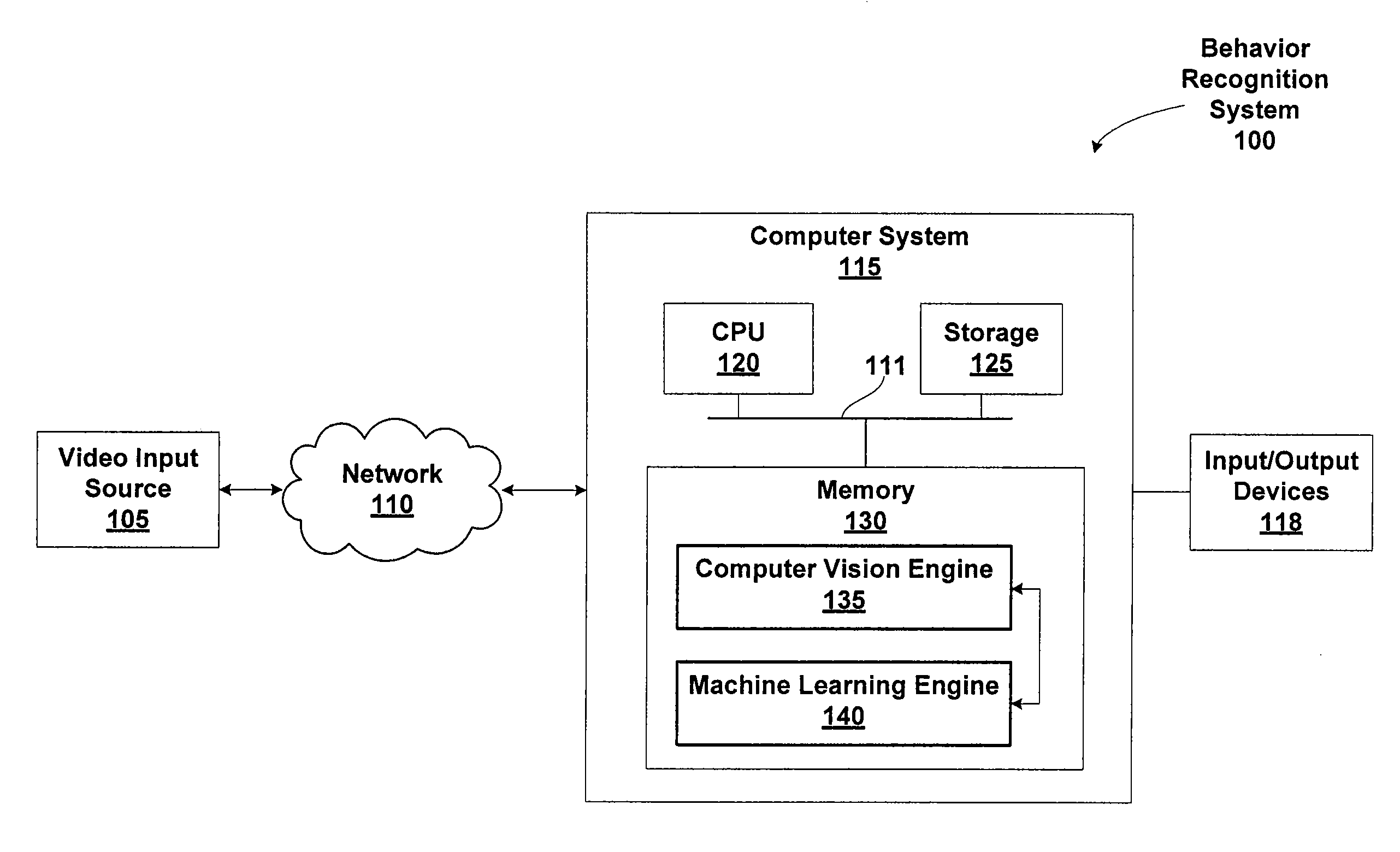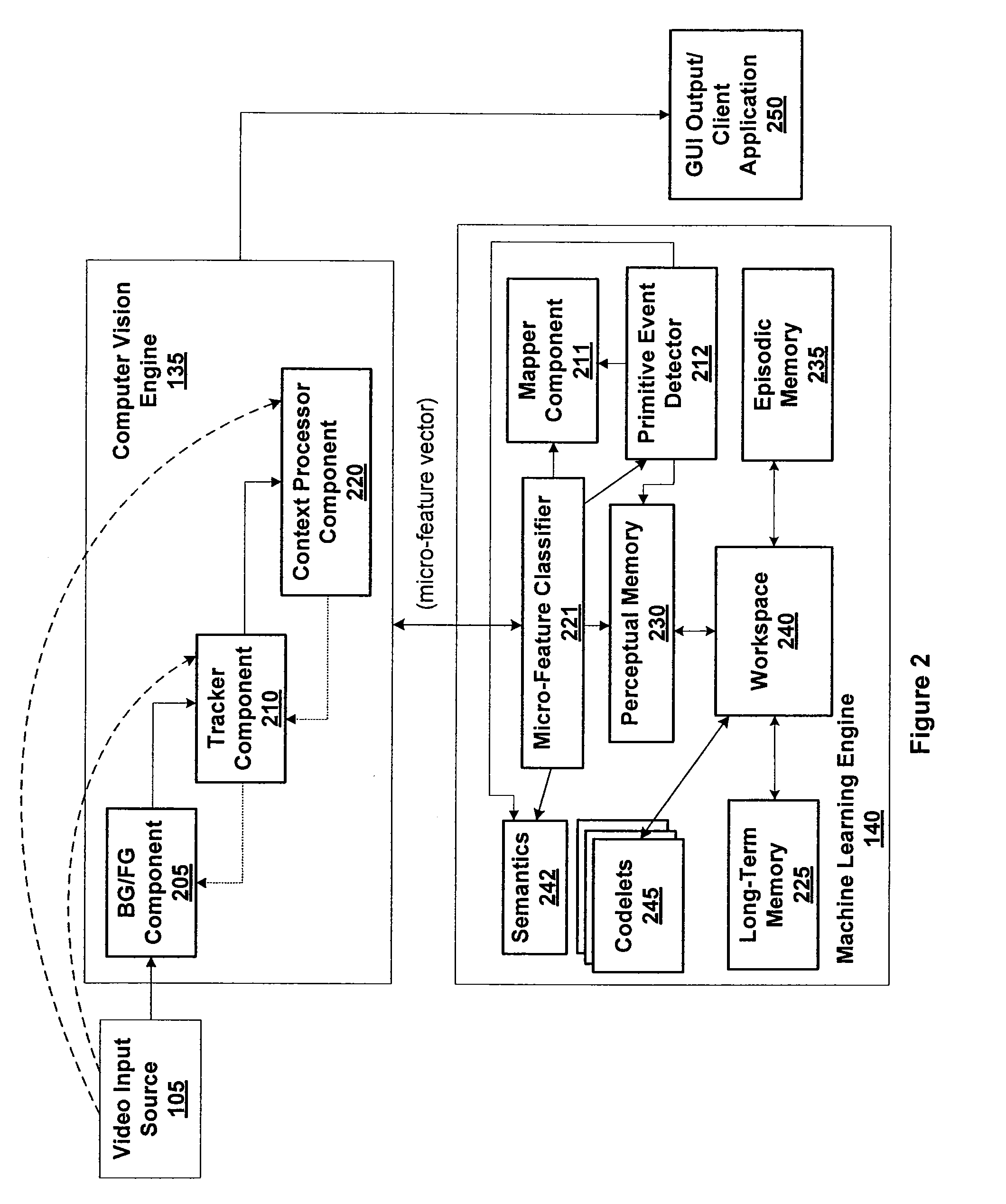Clustering nodes in a self-organizing map using an adaptive resonance theory network
a technology of adaptive resonance and clustering nodes, applied in the field of self-organizing map and adaptive resonance theory (somart) network, can solve the problems of surveillance systems with recognition capabilities that are labor intensive and prohibitively expensive to maintain or adapt for different specialized applications, and are generally incapable of recognizing that type of objects. system, and the effect of reducing the number of nodes
- Summary
- Abstract
- Description
- Claims
- Application Information
AI Technical Summary
Benefits of technology
Problems solved by technology
Method used
Image
Examples
Embodiment Construction
[0017]Embodiments of the invention discover object type clusters based on pixel-level micro-features that are extracted from one or more images. The extracted micro-features are heuristic features of foreground patches depicting objects in frames of video. The extracted micro-features may be represented as a micro-feature vector input to the micro-feature classifier. The micro-feature classifier may learn a set of distinct object types, over time, through observing different micro-feature vectors. In one embodiment, a SOM-ART network is included within the micro-feature classifier to process the pixel-level micro-features to adaptively learn and organize the micro-features into object type clusters. The training of the SOM-ART network is unsupervised, i.e., performed independent of any training data that defines particular objects, allowing a behavior-recognition system to perform unsupervised learning and object classification in parallel without being constrained by specific objec...
PUM
 Login to View More
Login to View More Abstract
Description
Claims
Application Information
 Login to View More
Login to View More - R&D
- Intellectual Property
- Life Sciences
- Materials
- Tech Scout
- Unparalleled Data Quality
- Higher Quality Content
- 60% Fewer Hallucinations
Browse by: Latest US Patents, China's latest patents, Technical Efficacy Thesaurus, Application Domain, Technology Topic, Popular Technical Reports.
© 2025 PatSnap. All rights reserved.Legal|Privacy policy|Modern Slavery Act Transparency Statement|Sitemap|About US| Contact US: help@patsnap.com



